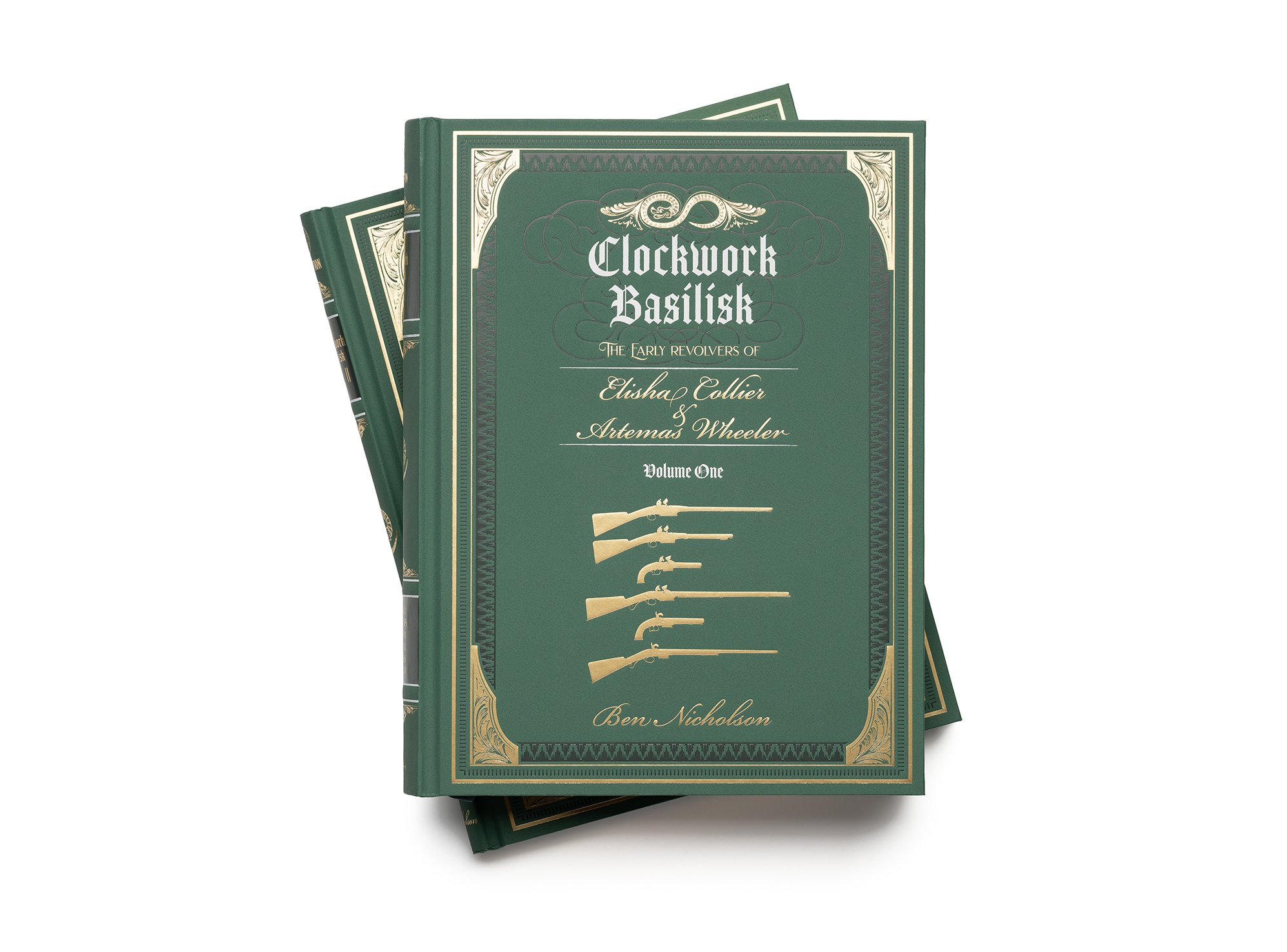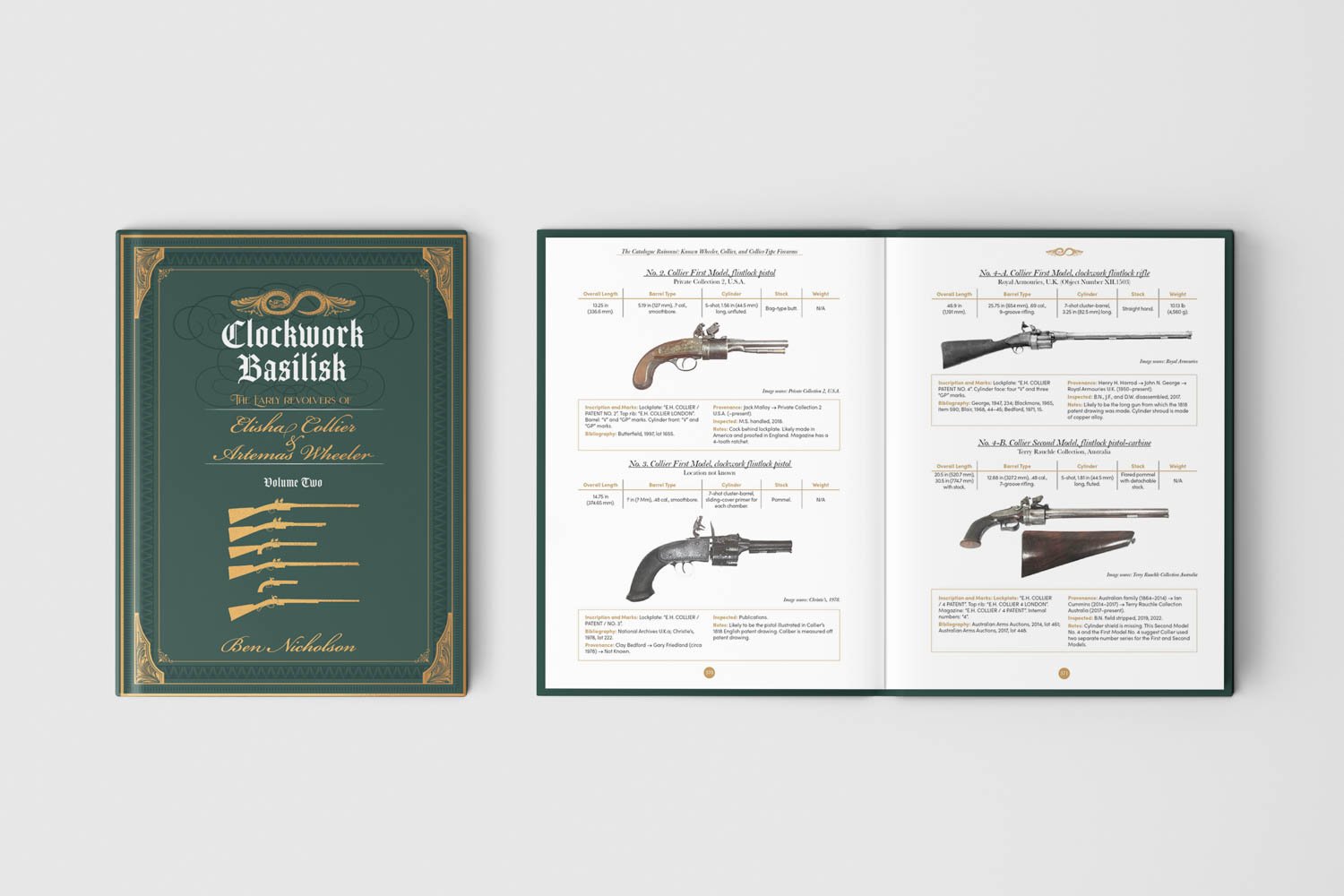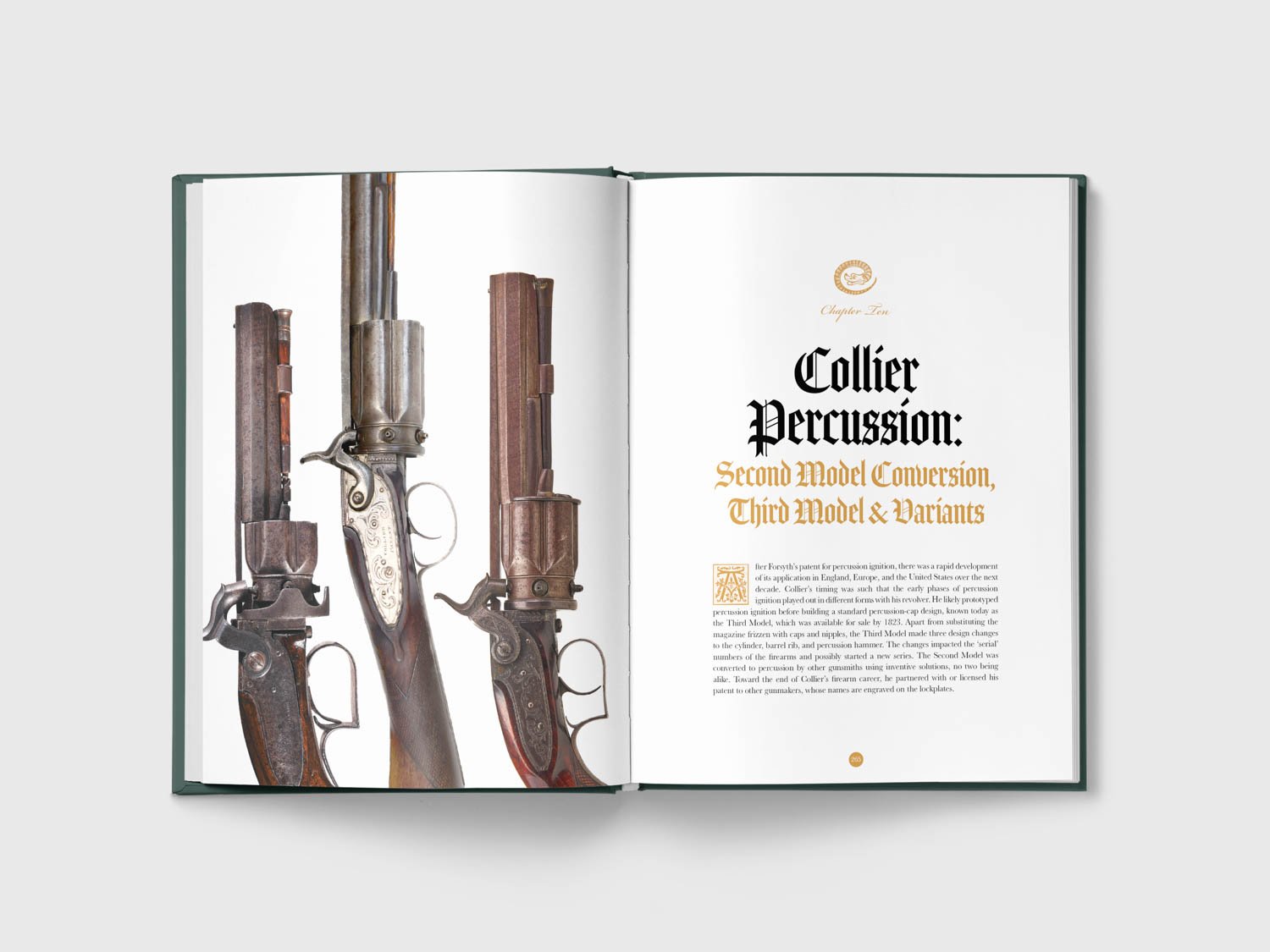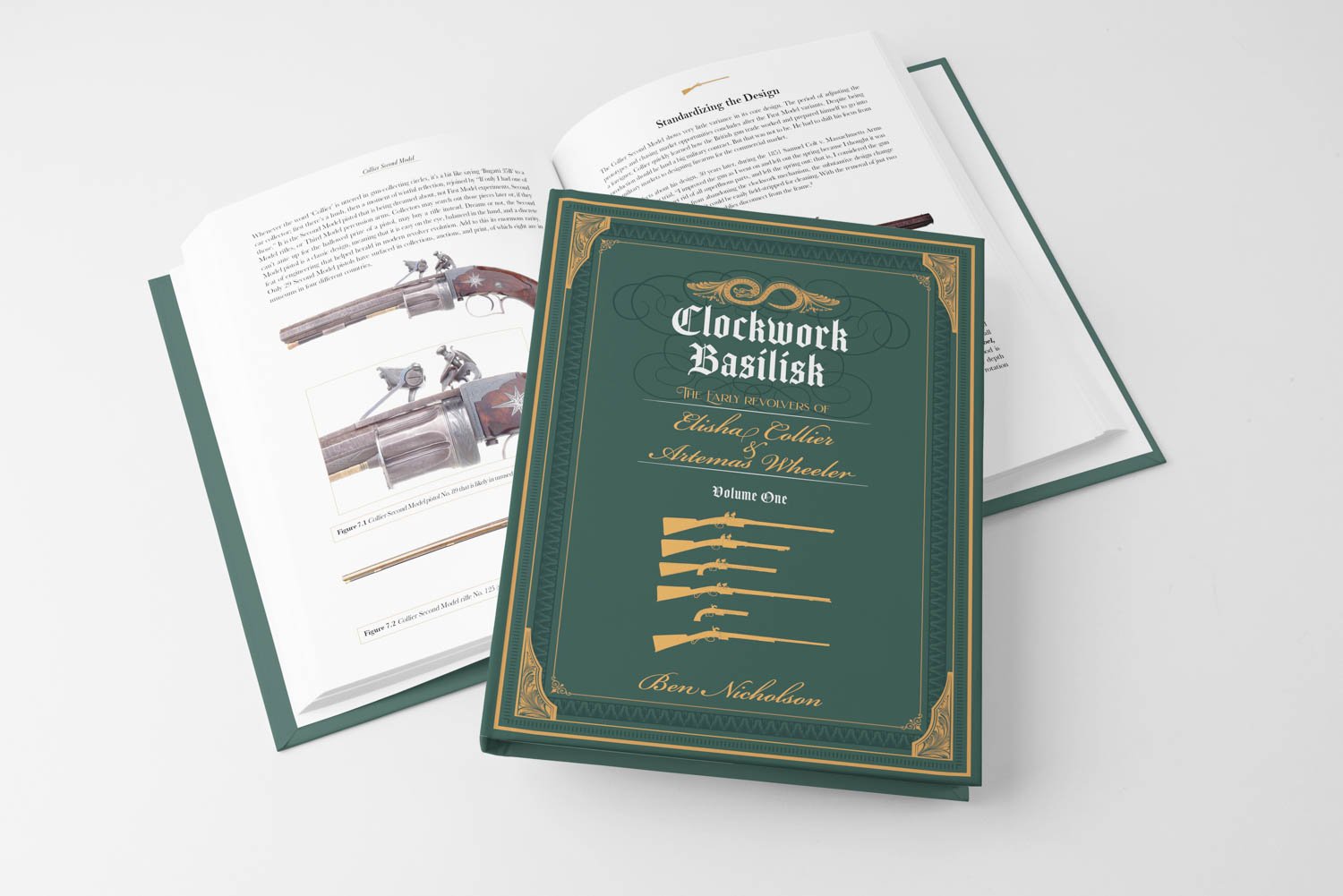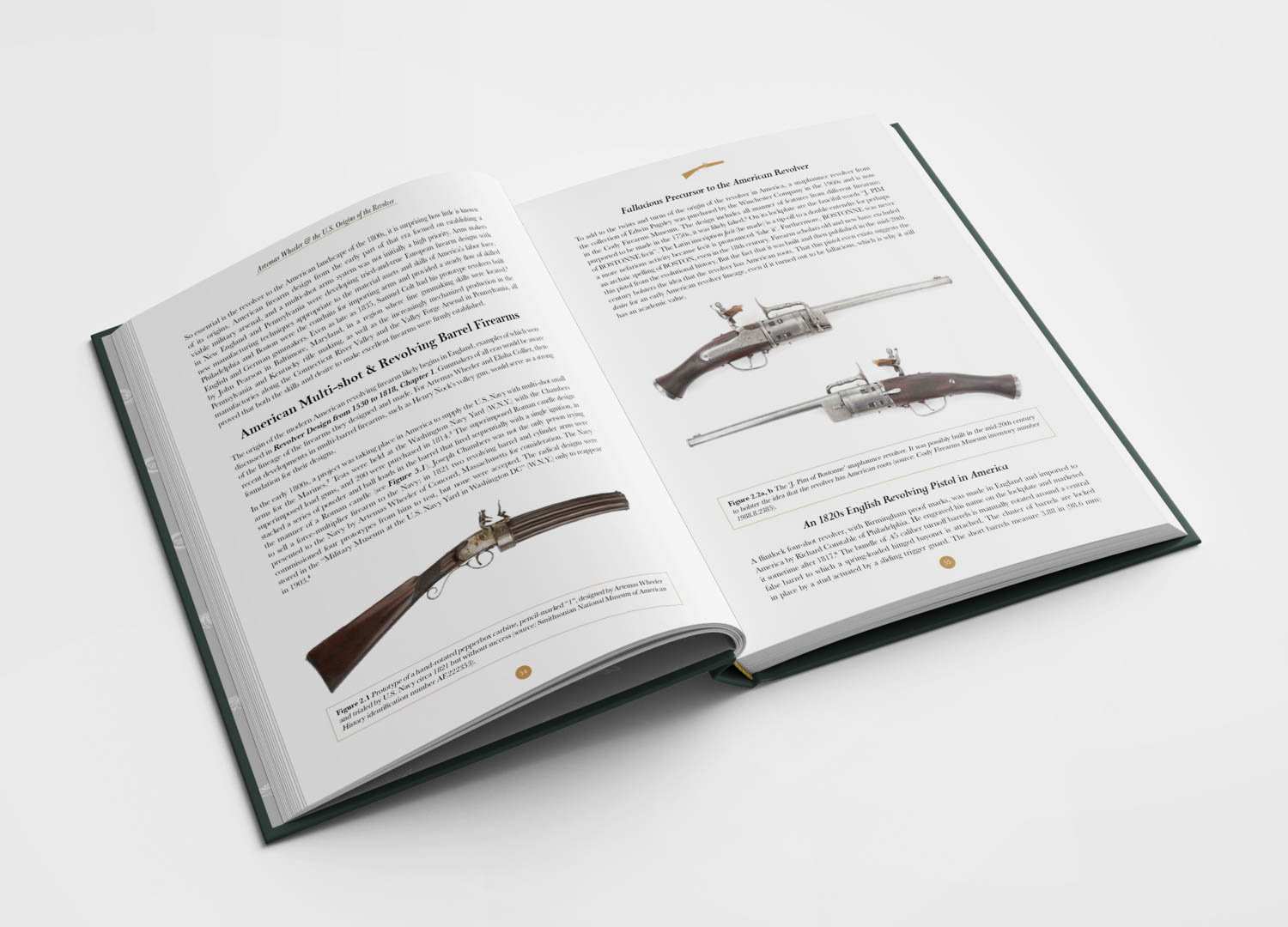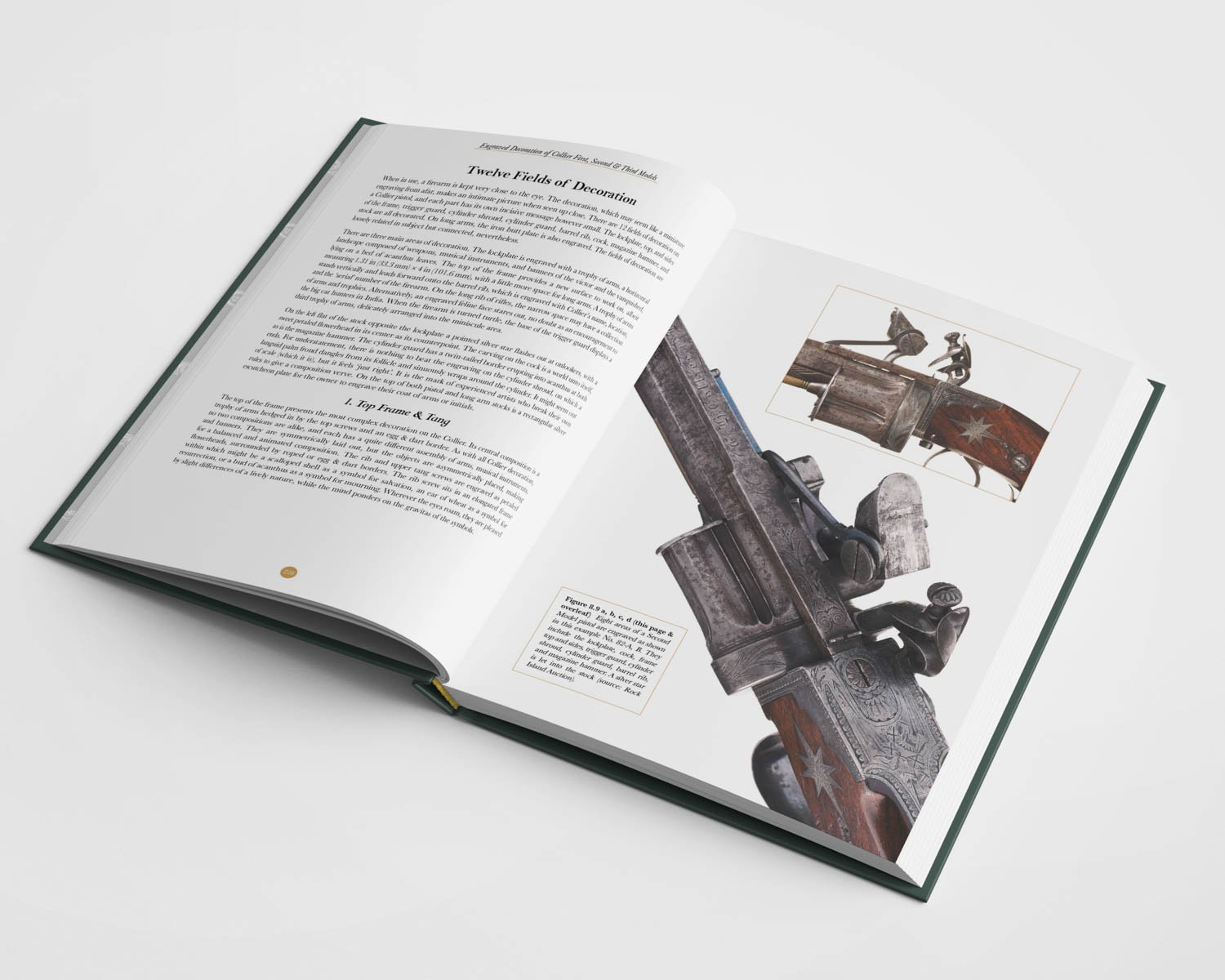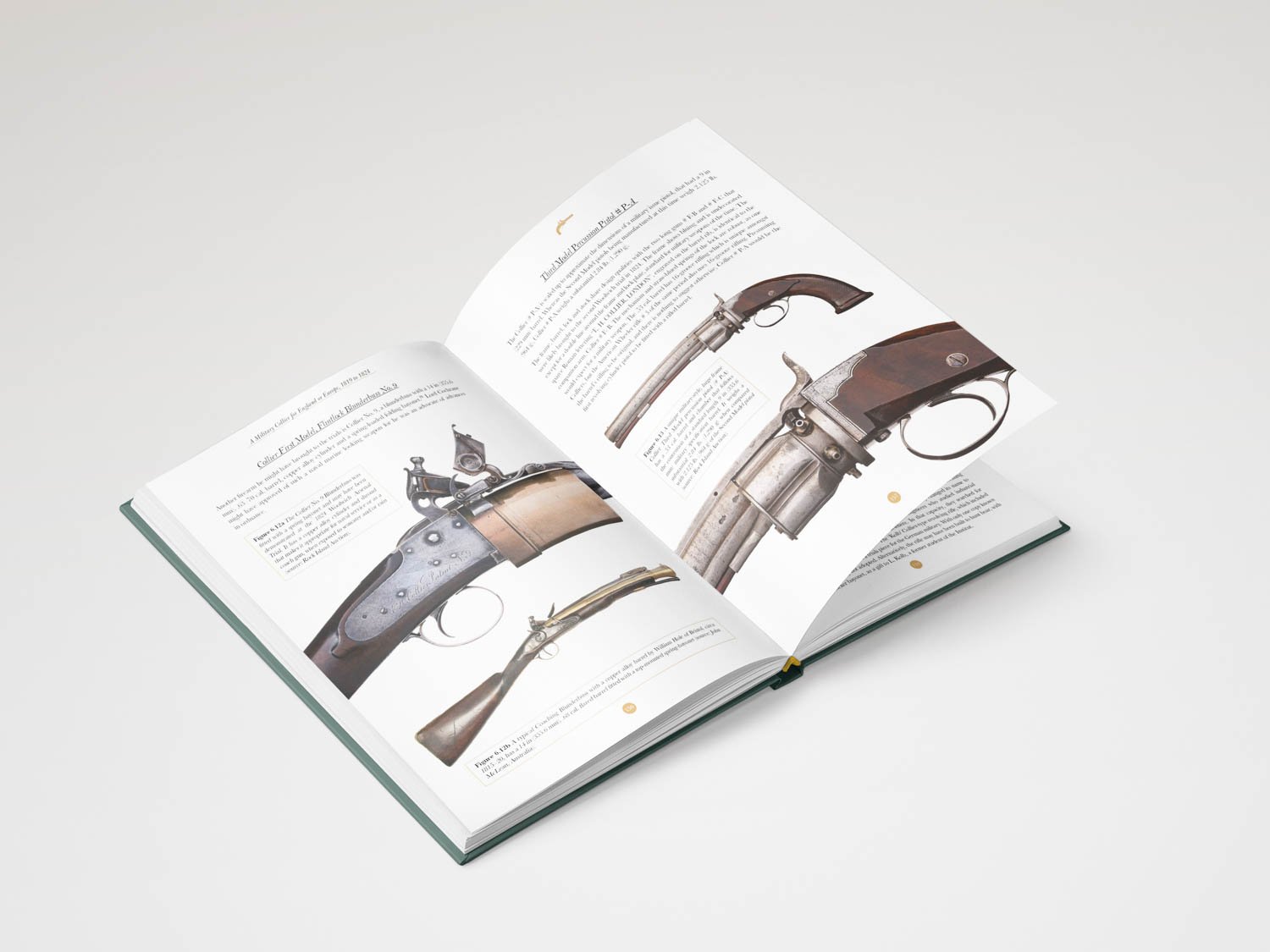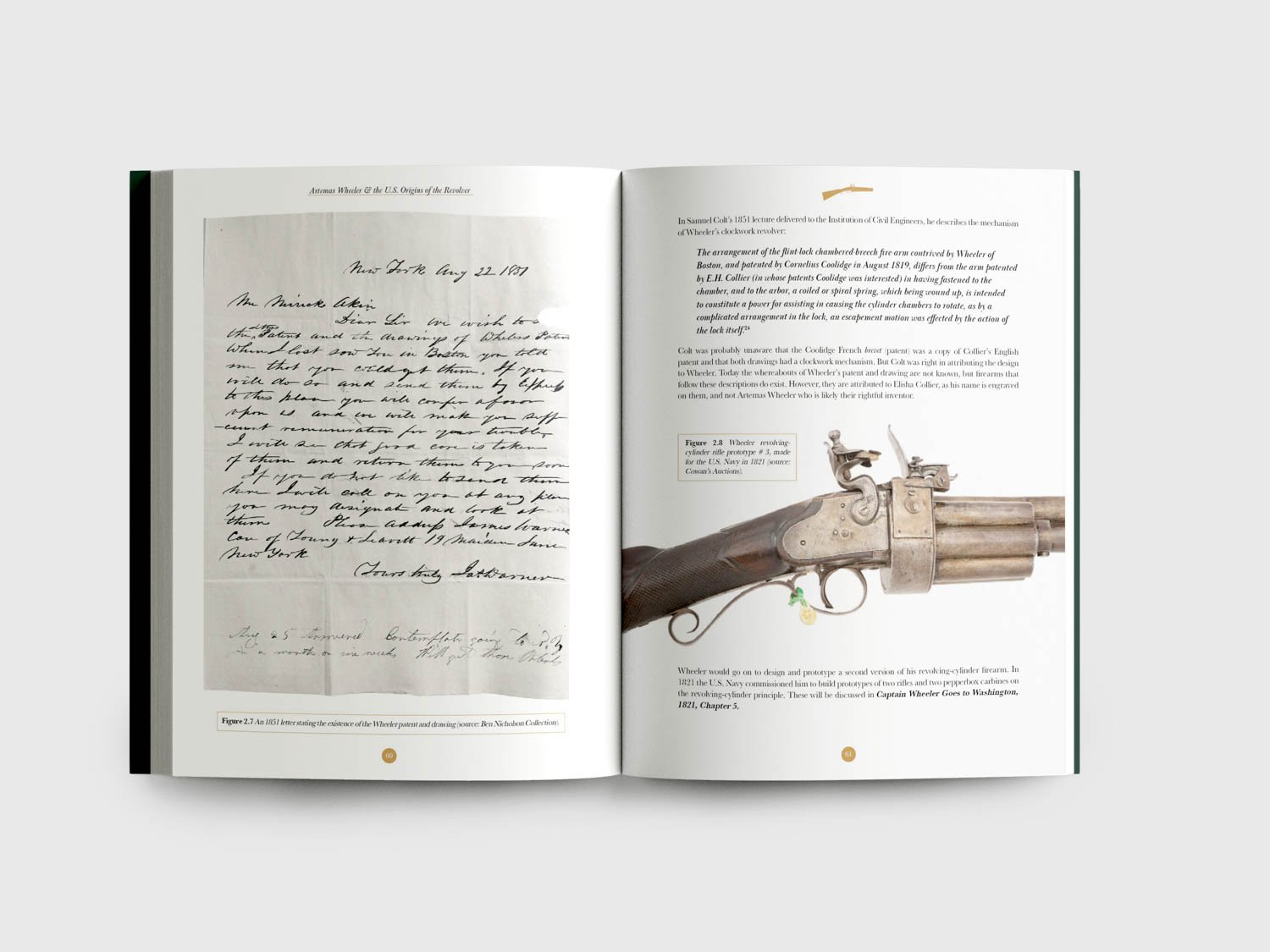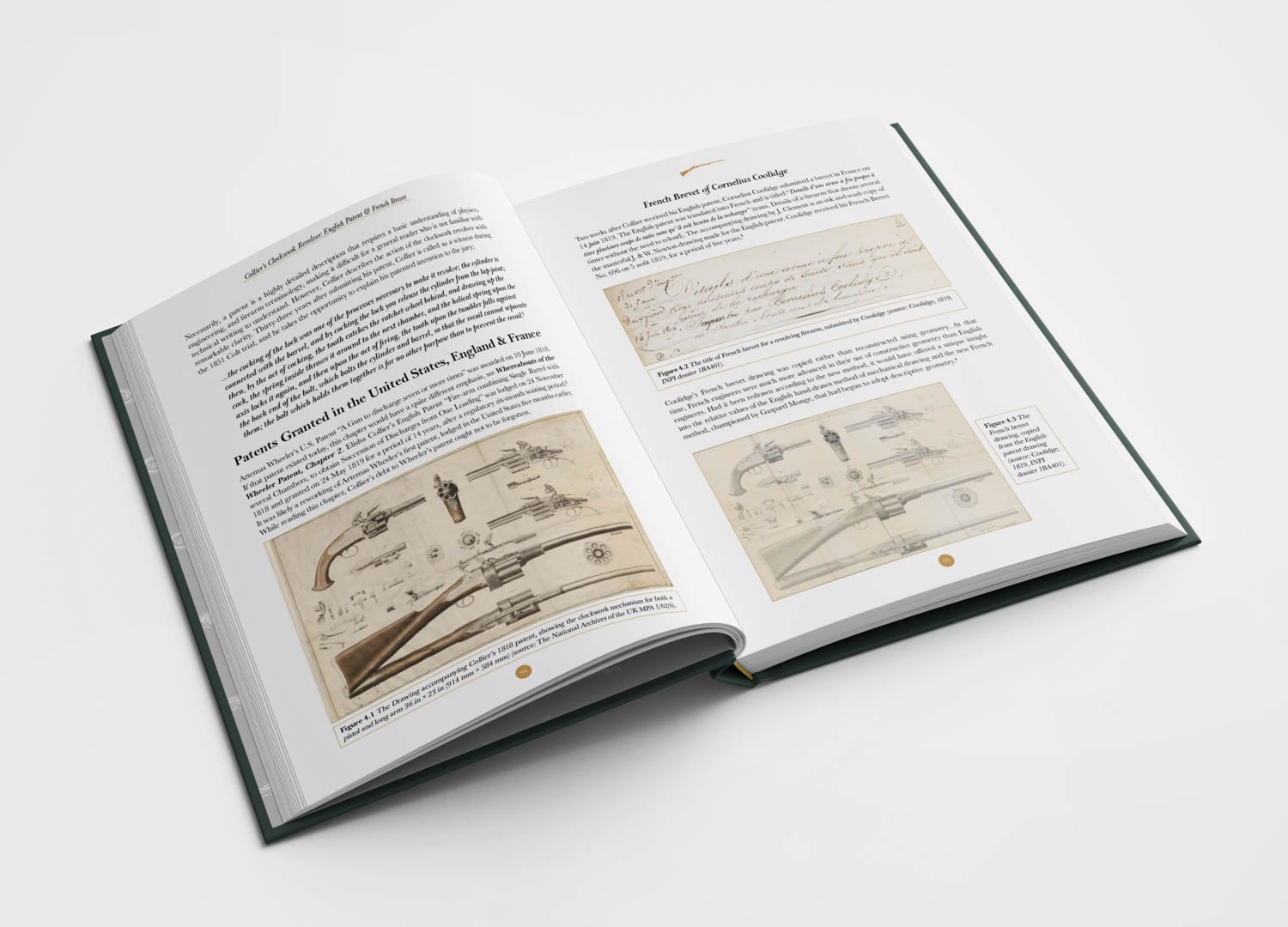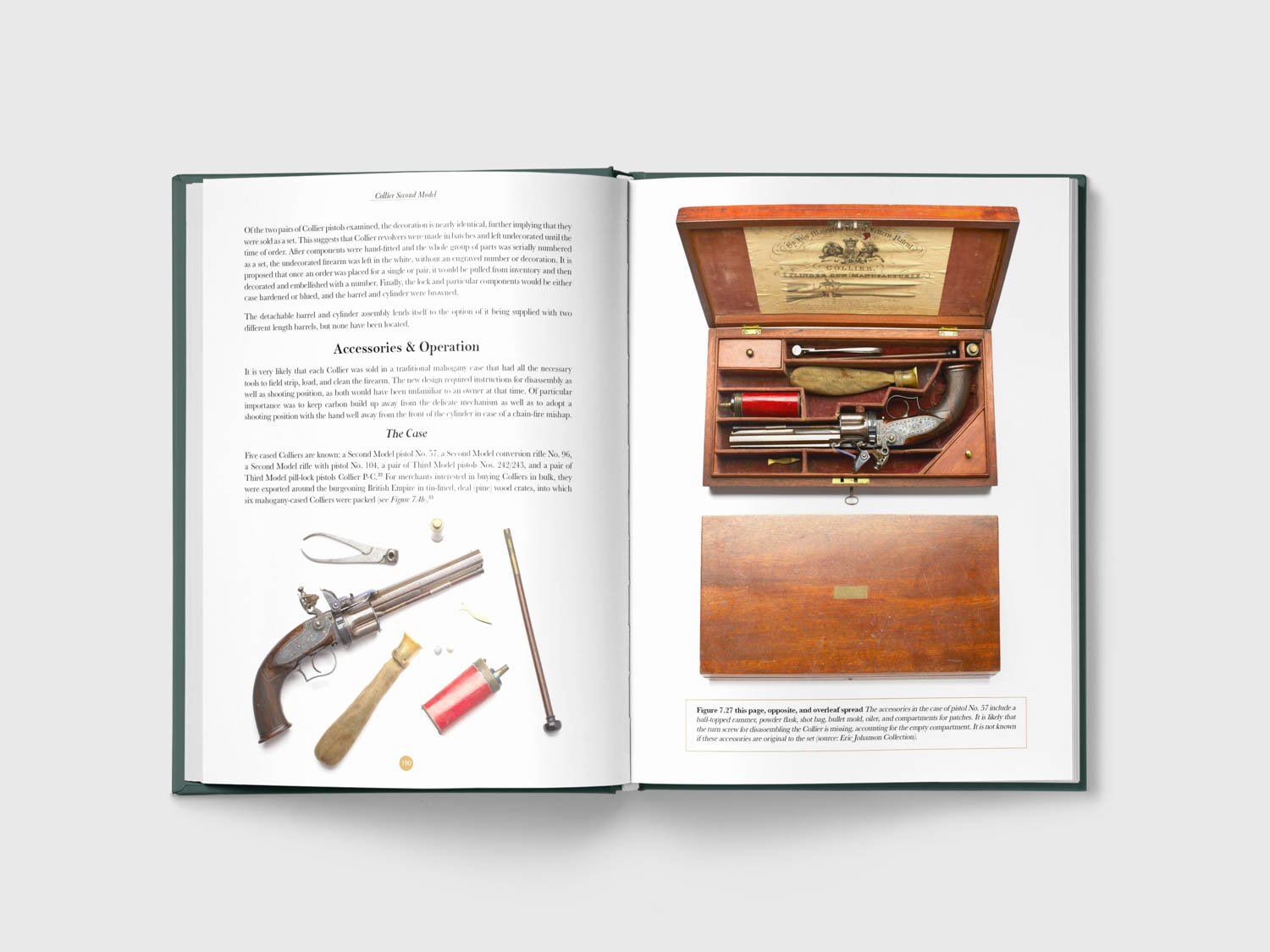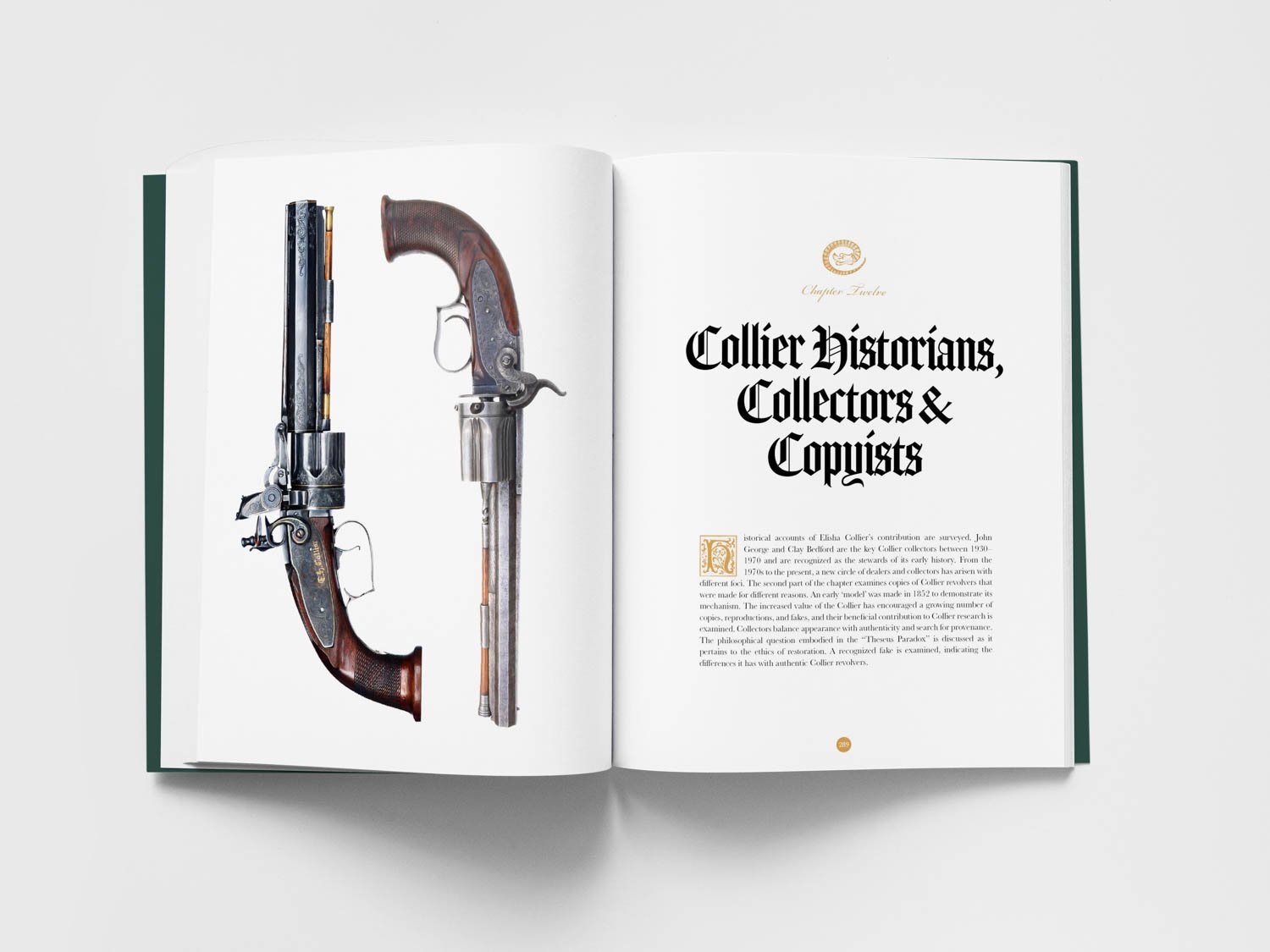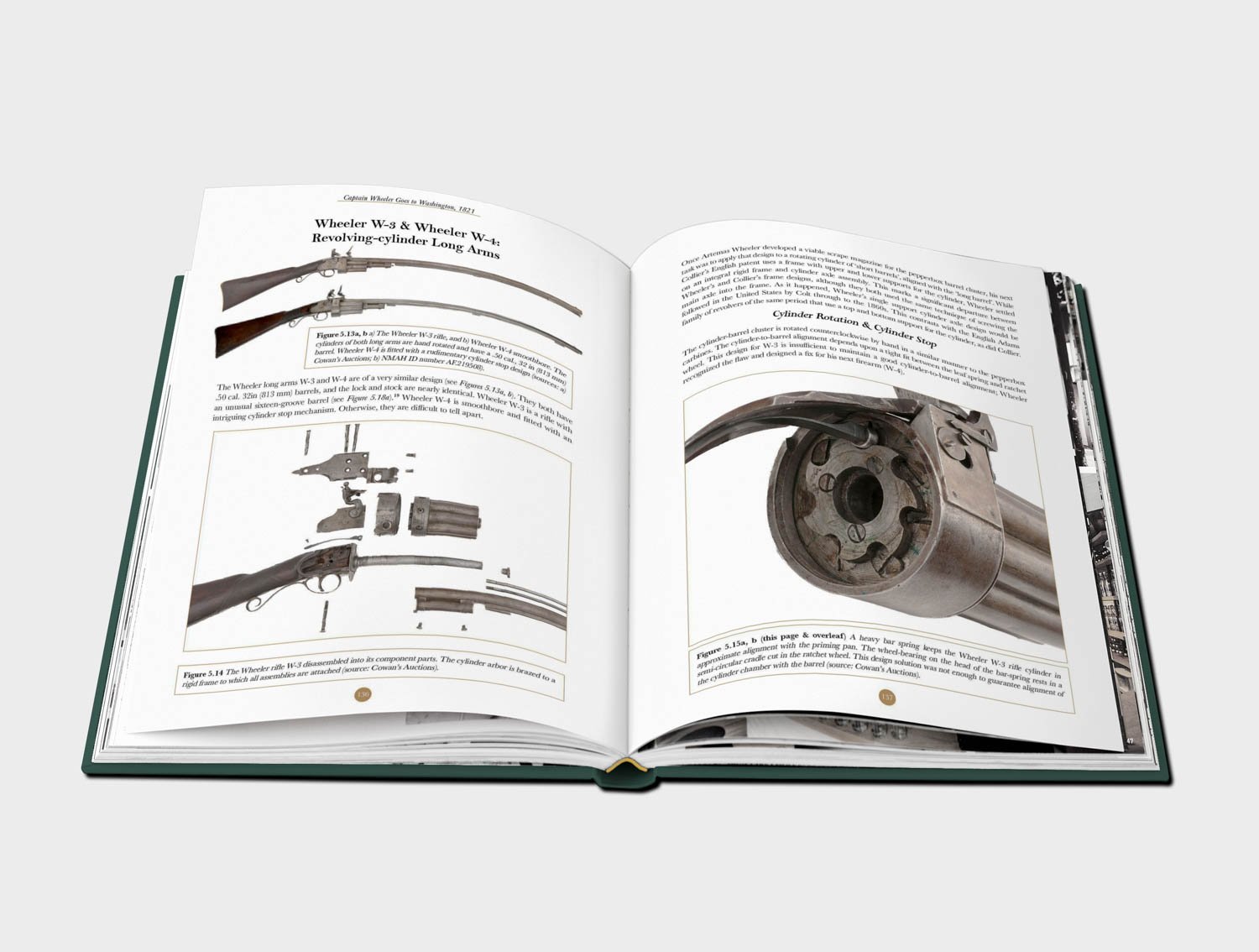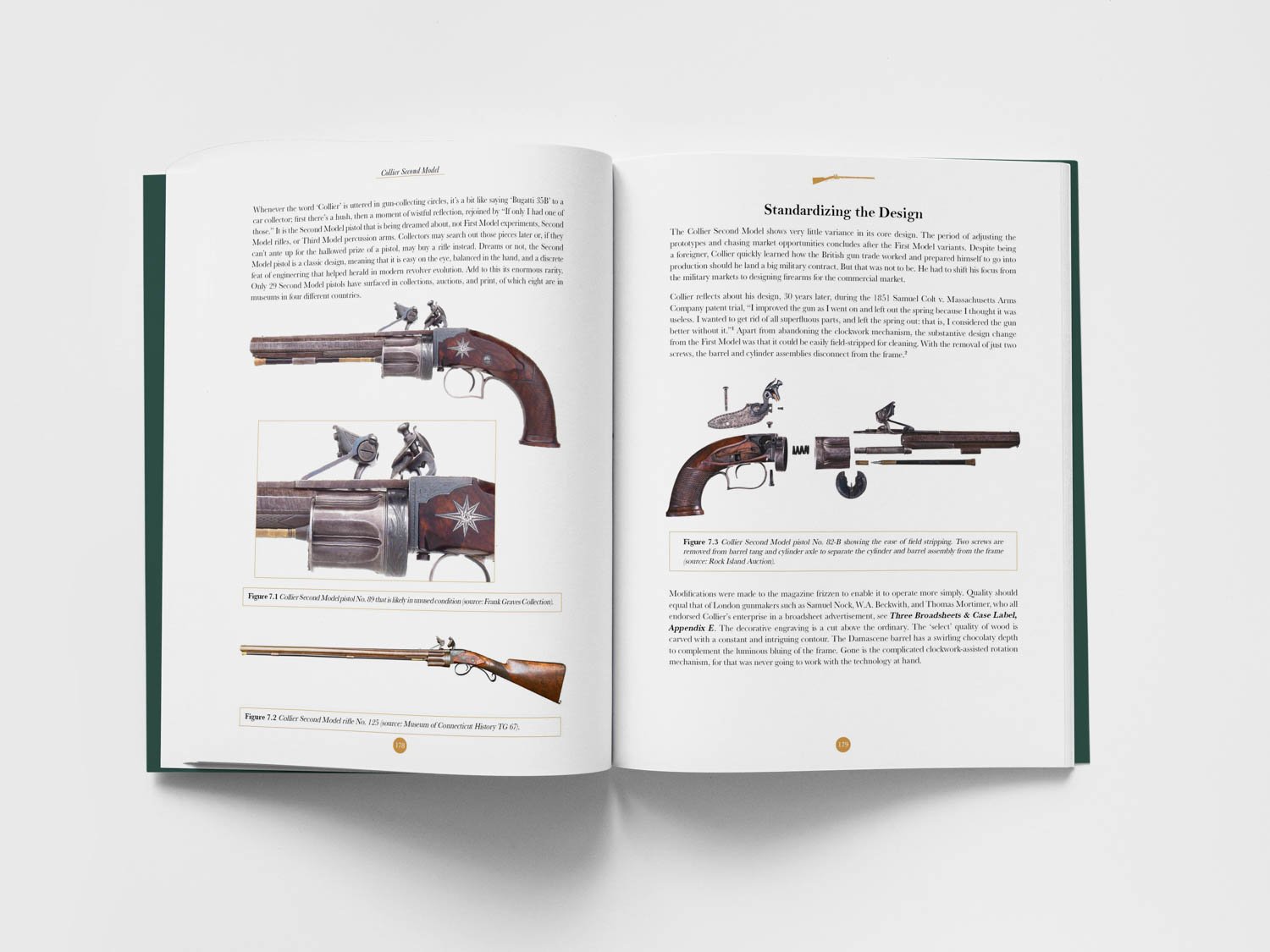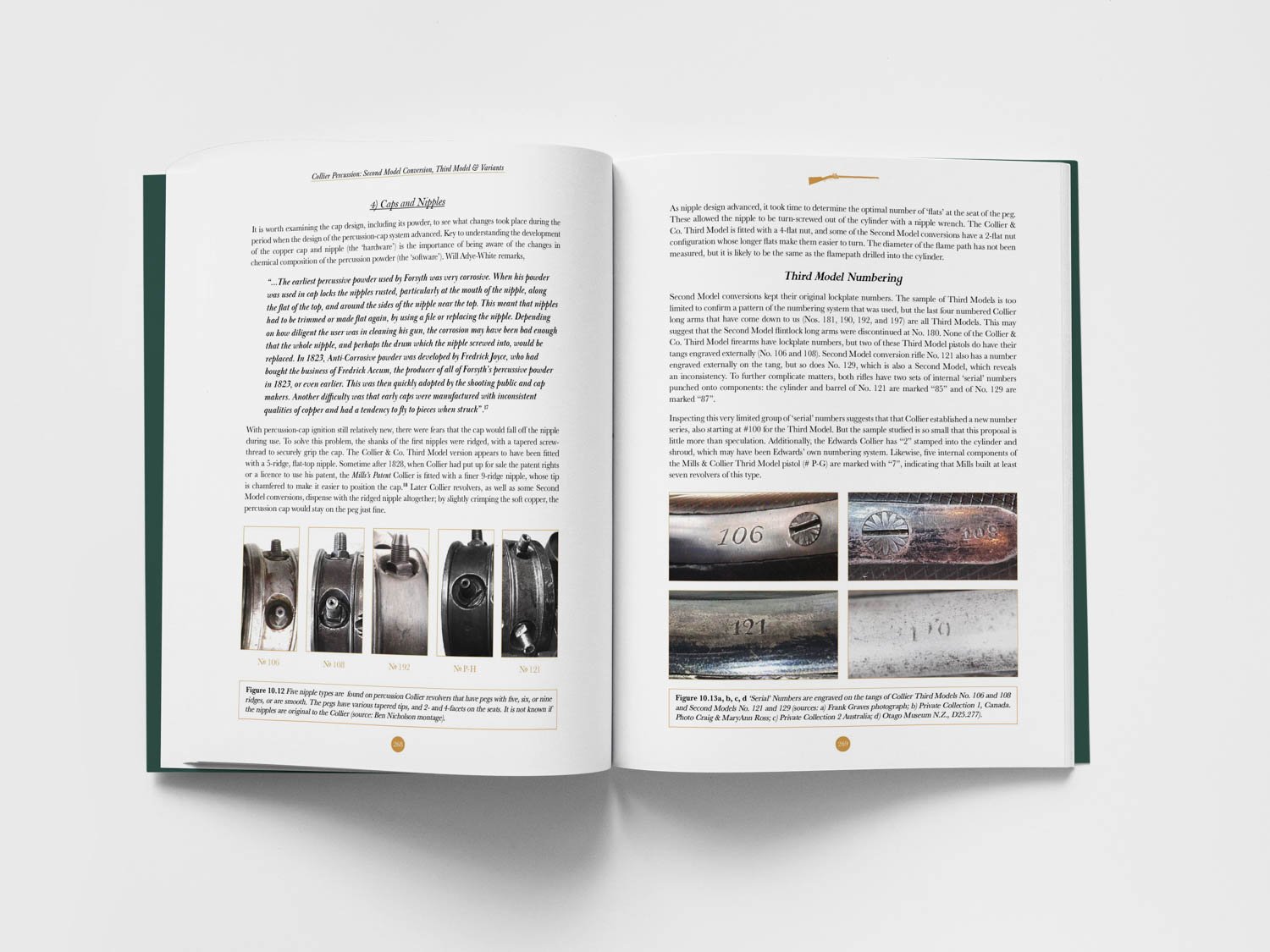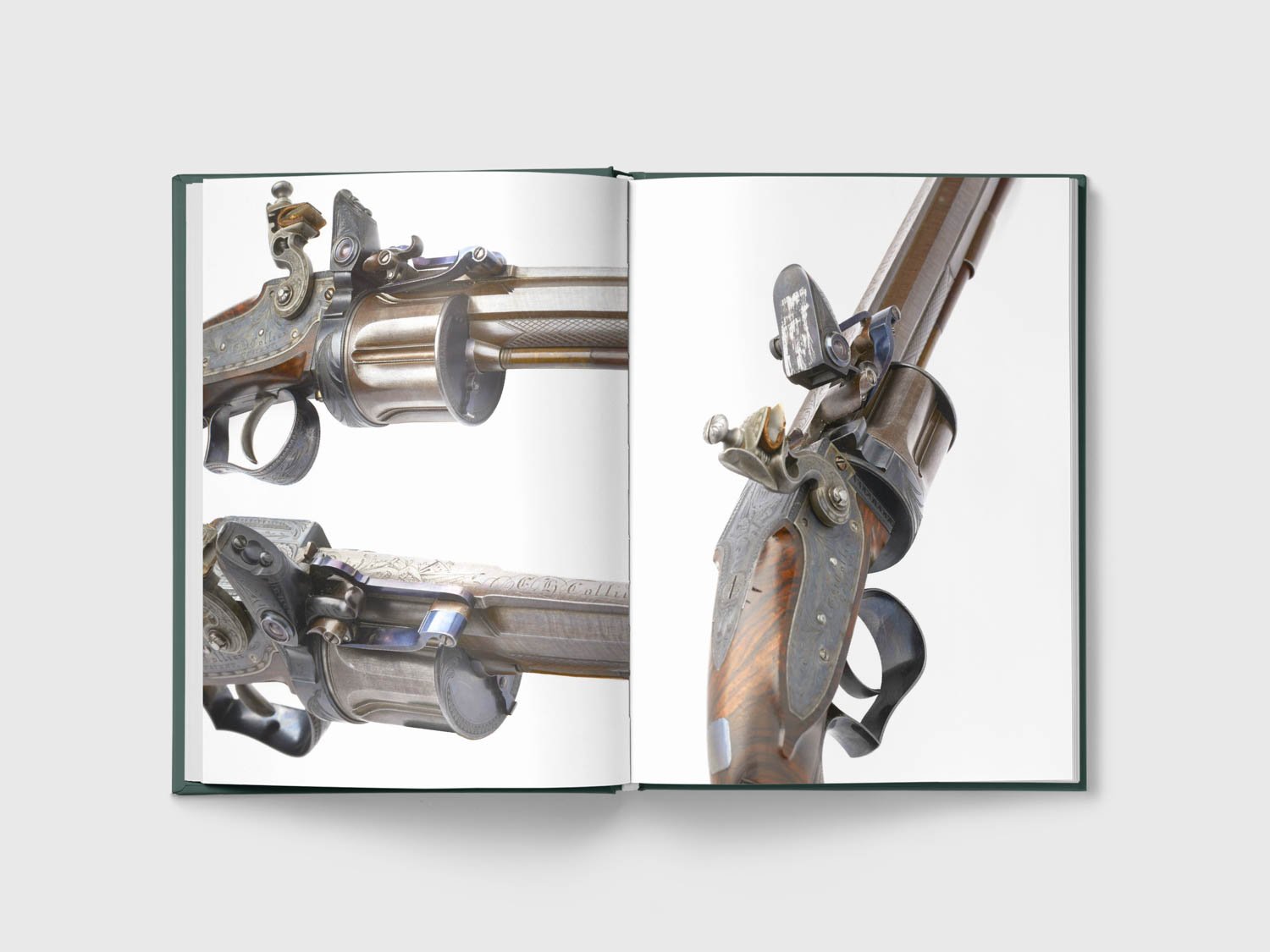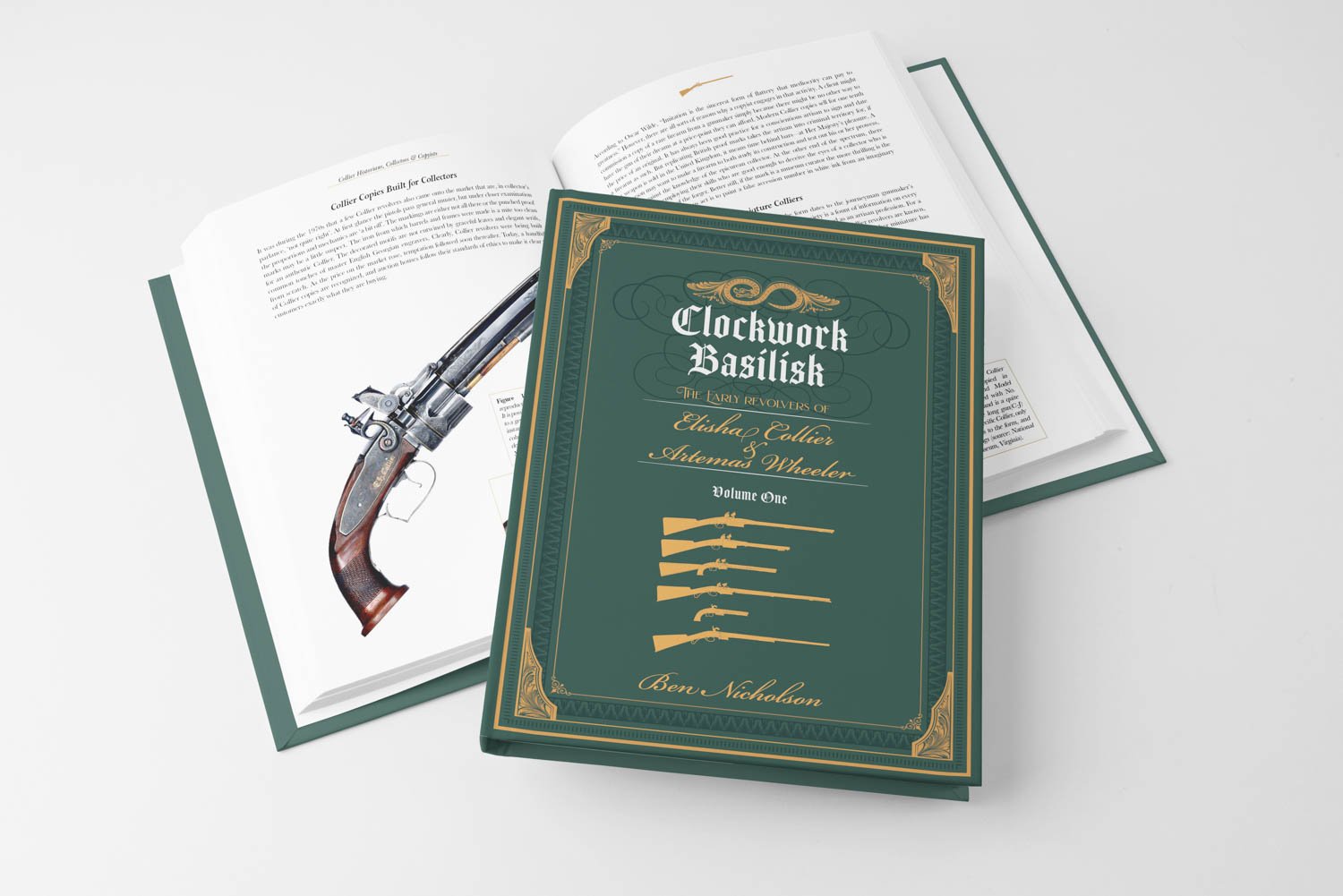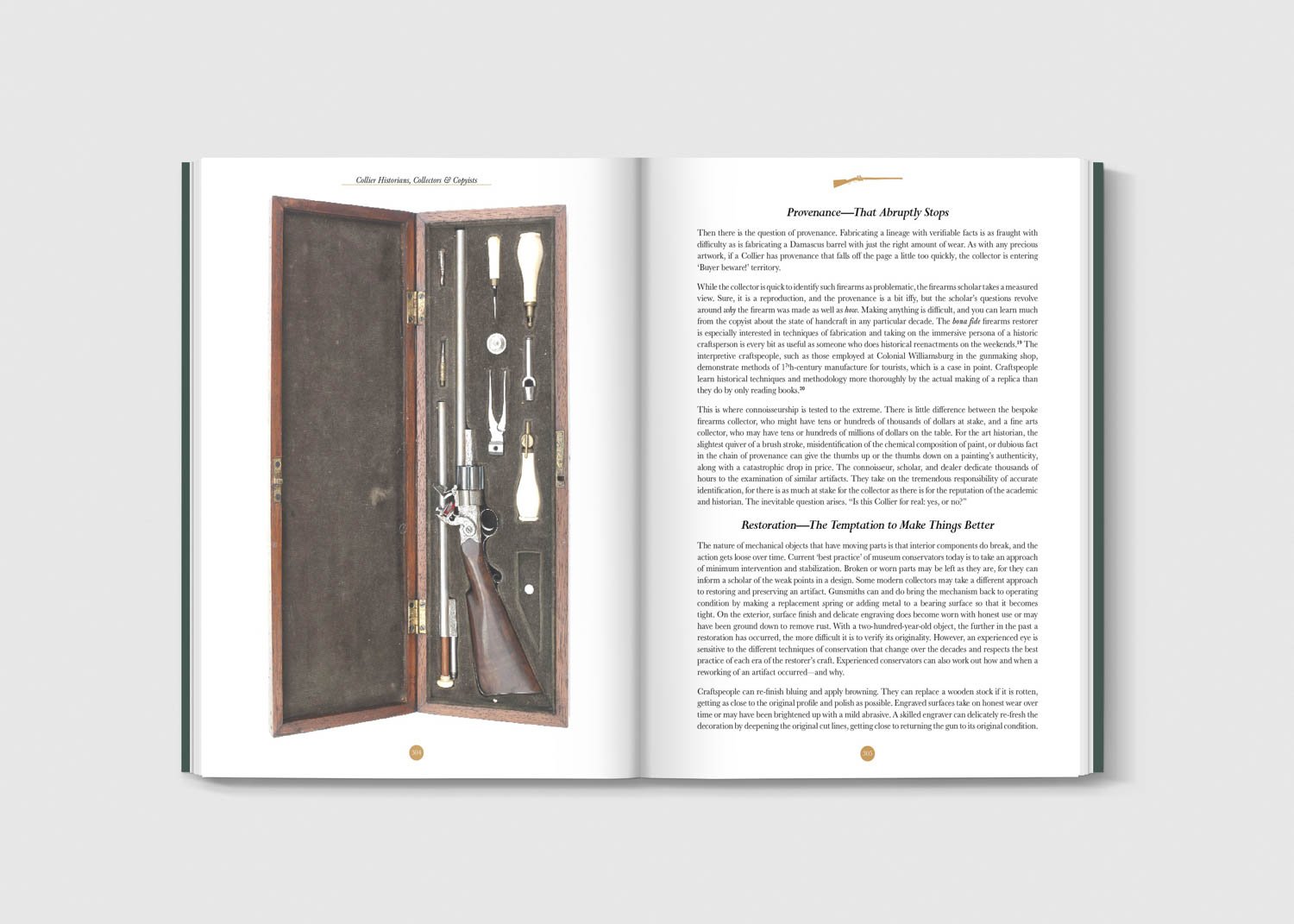Clockwork Basilisk (Standard Edition)
Clockwork Basilisk: The Early Revolvers of Elisha Collier & Artemas Wheeler
Features:
Item comes as a two-volume set
Page count: Volume 1: 433 pages; Volume 2: 174 pages
Each volume is 7.5" wide by 10" tall (approx.)
Commercial quality, section sewn binding which allows the book to lay flat
Full color prints on premium quality paper stock
Foil stamped faux leather hardcover
Ribbon page marker
Clockwork Basilisk: The Early Revolvers of Elisha Collier & Artemas Wheeler
Features:
Item comes as a two-volume set
Page count: Volume 1: 433 pages; Volume 2: 174 pages
Each volume is 7.5" wide by 10" tall (approx.)
Commercial quality, section sewn binding which allows the book to lay flat
Full color prints on premium quality paper stock
Foil stamped faux leather hardcover
Ribbon page marker
Clockwork Basilisk: The Early Revolvers of Elisha Collier & Artemas Wheeler
Features:
Item comes as a two-volume set
Page count: Volume 1: 433 pages; Volume 2: 174 pages
Each volume is 7.5" wide by 10" tall (approx.)
Commercial quality, section sewn binding which allows the book to lay flat
Full color prints on premium quality paper stock
Foil stamped faux leather hardcover
Ribbon page marker
Clockwork Basilisk: The Early Revolvers of Elisha Collier & Artemas Wheeler reveals the first attempt to put a multi-shot firearm in the hands of the common soldier and sportsman. This novel device—patented in America in 1818 by Artemas Wheeler—was taken to England by his partner, Elisha Collier, to be trialed by the military shortly after the Napoleonic wars. Rejected by both the British and French militaries, the Collier revolver with its clockwork-advanced cylinder eventually found its place as a bespoke self-defense and hunting weapon.
Across two volumes, the book’s thirteen chapters trace the life of the design, including:
280 years of revolver design from the 1530s to the 1810s;
Prototype phase of First Model manual- and clockwork-advance Collier designs;
An explanation of the Patent, supported by digital cutaway drawings created by World of Guns;
Military versions presented to the American, British, and French armies and navies;
Bespoke Second Model flintlock Colliers produced for the gentry;
The transition from hand-building to partial machine production;
Third Model Collier—the first percussion revolver;
The decoration of the Collier with symbolic motifs;
Elisha Collier’s nine engineering patents; and
Collier’s design as exposed in Samuel Colt’s revolver lawsuits.
Seven appendices complement the text. They include a catalogue raisonné, timeline, broadsheets, the case label, the British Patent, parts lists, and key passages from the 1851–1852 Colt trials. An animated digital Collier has been created in cooperation with the digital project World of Guns, revealing its operation and disassembly.
Clockwork Basilisk sets a new standard for an academic firearms publication, combining rigorous original scholarship—supported by facsimile documents—with beautiful presentation and the very latest in digital object interactions. It is equally accessible to all generations of firearm enthusiasts. The book’s meticulous production is an even match for these rare weapons, of which fewer than 250 were made.

